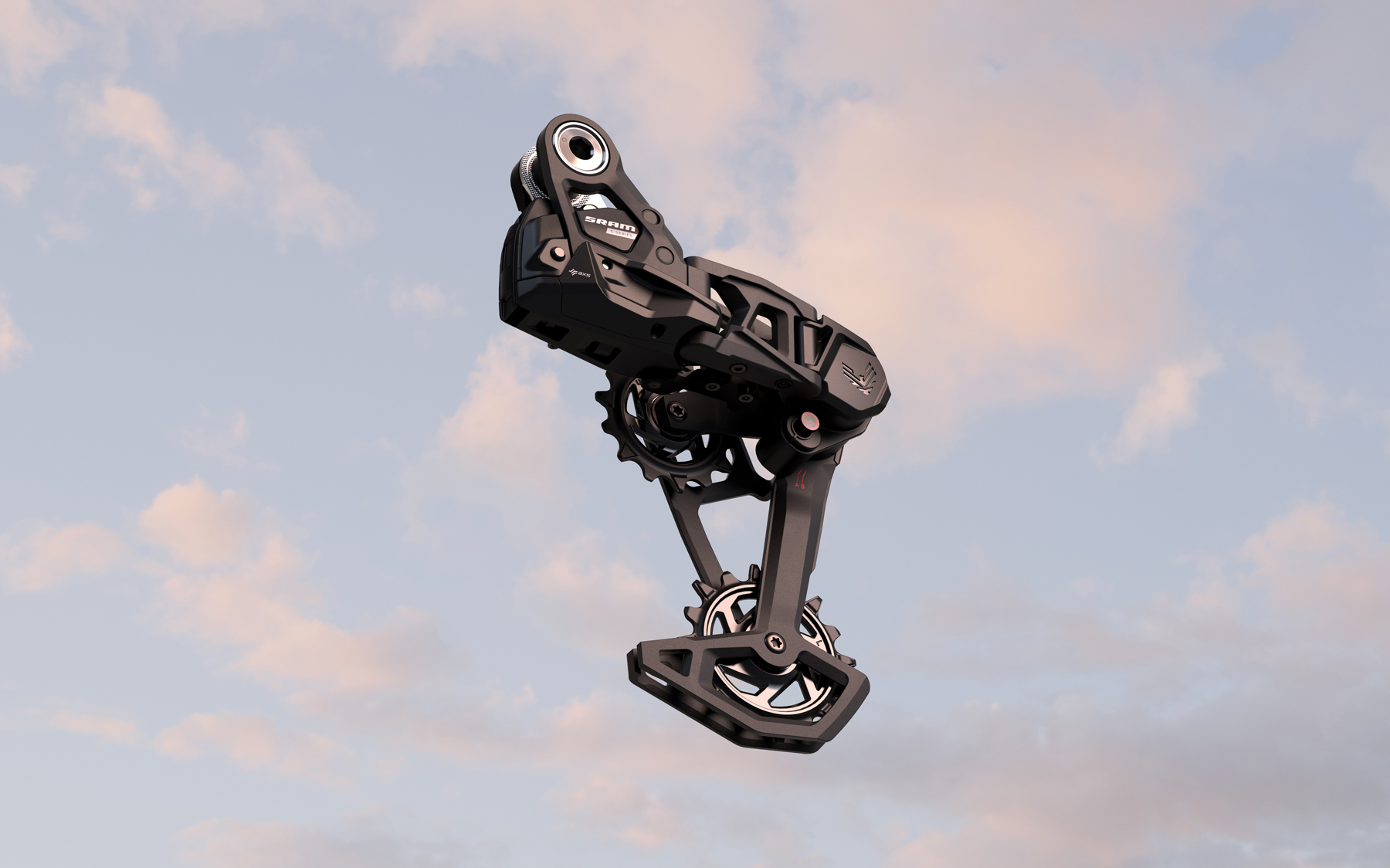
Intro
Ever since the original X0, XX, and XX SL versions of SRAM’s Transmission launched last year, we figured that more affordable versions would be coming down the line. The GX iteration that followed a few months later wasn’t much of a surprise, but it was less clear where SRAM would go from there.
All of the T-Type groupsets to date are wireless, and certain aspects of their design seemed like they might limit the options for a mechanical version down the line — chiefly the narrow-wide cassette tooth profile and the “Cassette Mapping” built into the derailleur software. That is, at least without some major changes.
[Check out our First Look on Transmission for a whole lot more on all that.]
Now SRAM has released the next step in Transmission’s trickle-down to more affordable options — and the new S-1000 is indeed still wireless. But some interesting details set it apart from the existing T-Type groupsets, so let’s see what SRAM has come up with — and the updated DB8 brakes that they’ve rolled out, too.
S-1000 Derailleur
- MSRP: OE Only
- Stated Weight: n/a
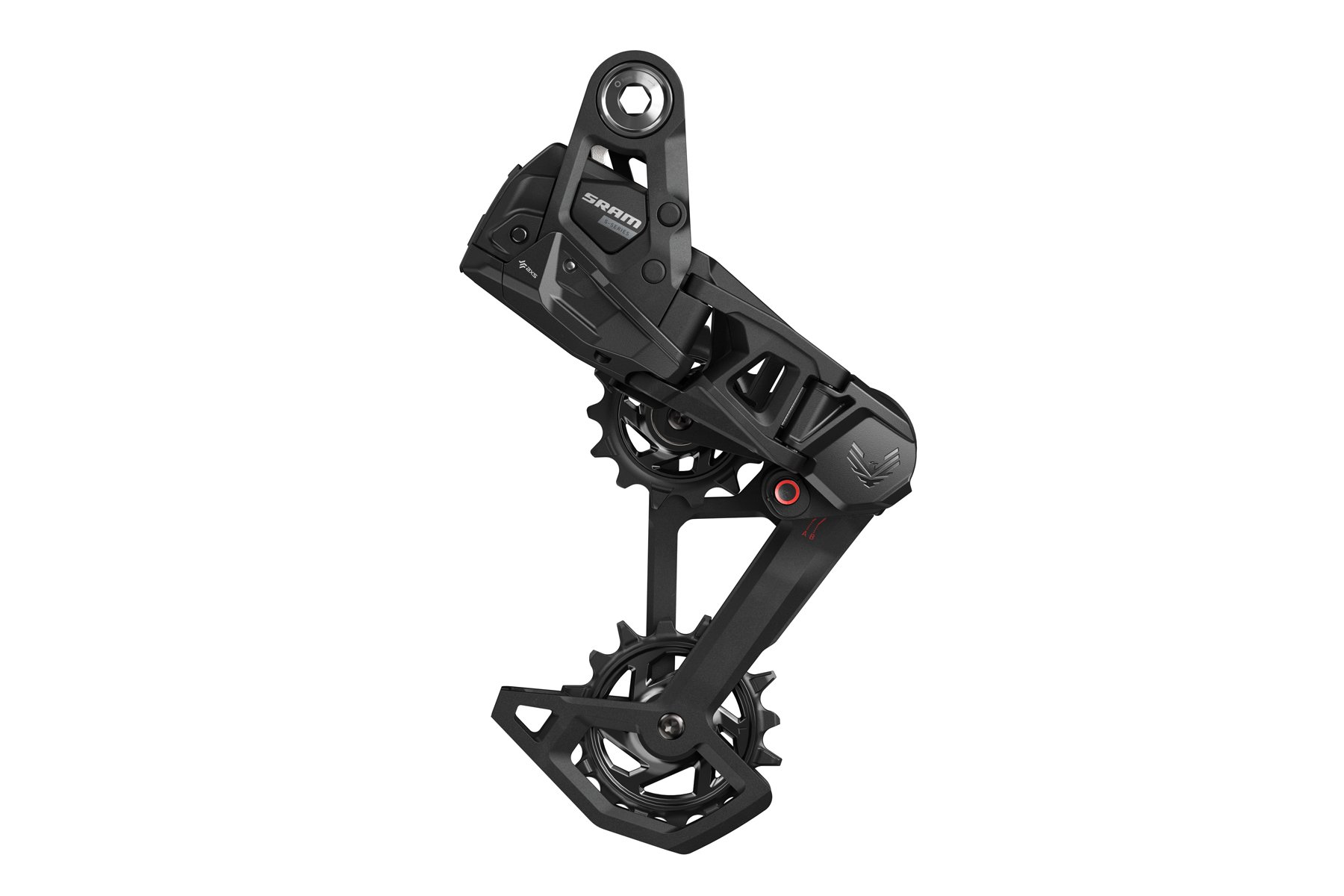
SRAM says that the S-1000 derailleur is based on the design of the GX version, and apart from color / finish, they indeed look extremely similar. As with all the other T-Type derailleurs, the S-1000 one uses SRAM’s Full Mount interface, which takes the place of a UDH derailleur hanger to mount the derailleur directly to the frame; non-UDH frames are not compatible.
The main mechanical difference between the S-1000 derailleur and the GX one is that the S-1000 uses a new (presumably less expensive) “drag spring” clutch in the cage pivot; the exact details of how it differs from the design used in the higher-end T-Type groupsets aren’t stated.
[The available specs for the S-1000 components are very limited right now, but we’ll update them if / when we get more detail from SRAM.]
But the rest of the details closely mirror those of the GX T-Type derailleur. The battery (the same design that SRAM has used on all of their AXS derailleurs to date) is tucked inside the mounting plates, and the S-1000 derailleur is still rebuildable, with protective skid plates and a two-piece outer link that can be replaced individually, should they be damaged.
At least for now, SRAM is only offering the S-1000 derailleur for OE sale (i.e., on complete bikes, not available on its own). But the higher-end T-Type derailleurs are compatible with the S-1000 groupset should you wish to upgrade, or simply need a replacement; all other derailleurs, including non-T-Type AXS ones, are not compatible with the rest of the S-1000 groupset.
S-1000 Cassette
- MSRP: n/a
- Stated Weight: n/a
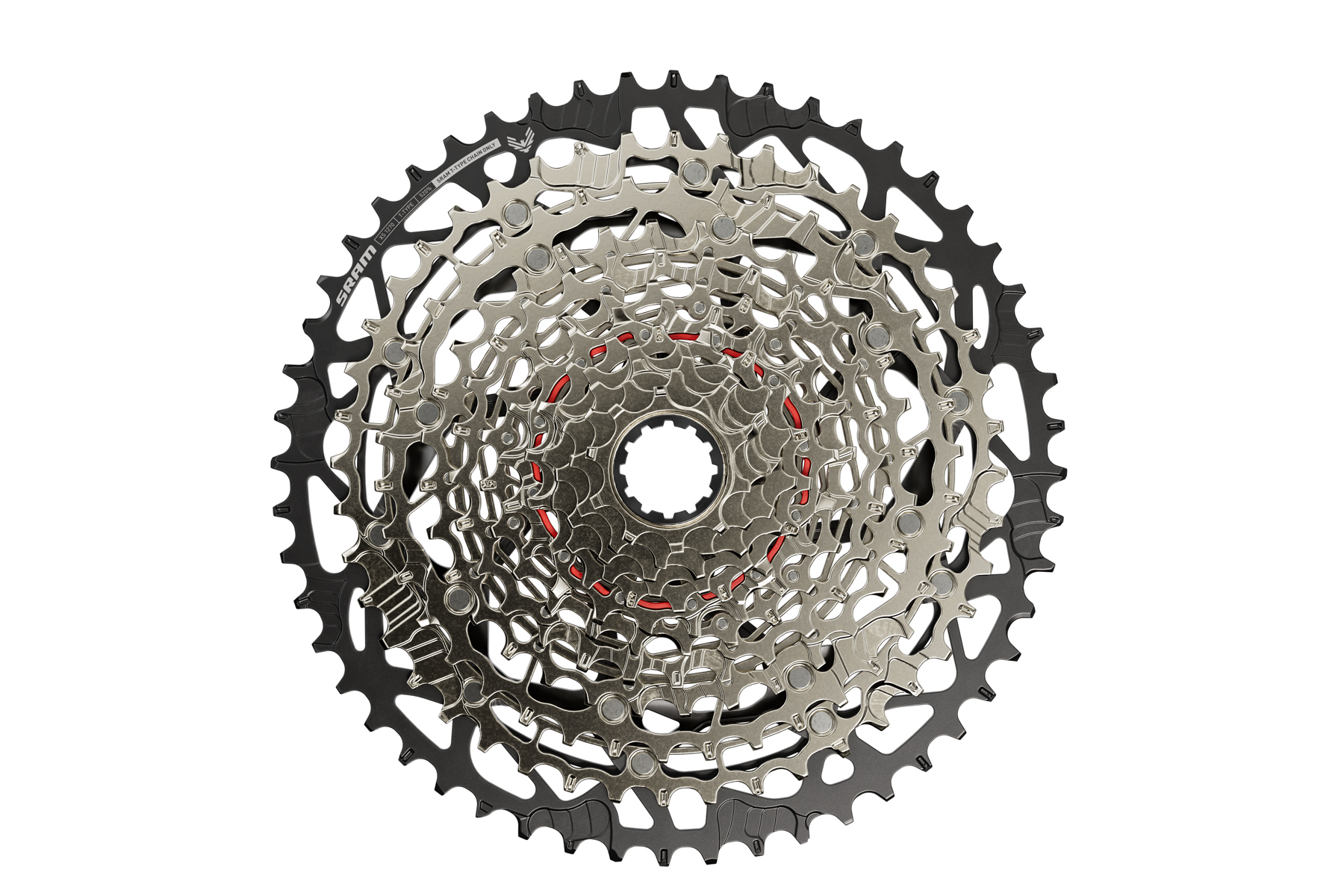
The S-1000 cassette also looks a lot like the GX T-Type one, but there’s a key difference hiding underneath — the hub mounting interface.
Unlike the higher-end T-Type groupsets, which use SRAM’s XD interface between the cassette and rear hub, the S-1000 cassette uses an HG freehub body — the interface that SRAM used on their 8, 9, and 10-speed drivetrains from back in the day, and that Shimano stuck with through their 11-speed generation of parts.
The S-1000 cassette also requires a T-Type chain, due to changes in the tooth profile and roller diameter from SRAM’s original Eagle 12-speed systems; there’s no dedicated S-1000 chain, at least for now, but any of the other T-Type options will work.
It’s not new for SRAM to use an HG driver for their more affordable cassettes — the current SX and NX Eagle ones do as well — since that mounting interface requires less complex design and manufacturing than the XD standard (which helps bring costs down). But what is new is that the S-1000 cassette gets the same 10–52-tooth gearing range as the higher-end T-Type cassettes, instead of the 11-50-tooth range on the SX and NX.
SRAM was able to squeeze a 10-tooth cog onto a HG driver by combining the lockring and the smallest cog into a single unit; the fact that the T-Type groupsets also space the cassette 2.5 mm outboard as compared to SRAM’s standard Eagle drivetrains has to help, too.
The S-1000 cassette is compatible with higher-tier T-Type groupsets (and vice versa), though you’ll need a different freehub body for your rear hub to handle the change between the HG and XD drivers. It’s also worth noting that SRAM says that the S-1000 cassette is only compatible with steel freehub bodies, presumably because it’s prone to gouging into aluminum ones and getting stuck (a fairly common issue with HG cassettes on softer aluminum freehubs in general).
Another advantage of the HG driver, though (in addition to the cost savings), is that it allows for a two-piece cassette, with gears 8 through 12 being a separate, replaceable cluster from the rest of the cassette. SRAM hasn’t announced pricing for the replacement cluster (or the full cassette itself) but we’d expect it to be significantly cheaper than the $250 GX T-Type cassette. SRAM hasn’t published a stated weight, either, but it’s presumably heavier than the 447 g GX one.
S-1000 Crankset
- MSRP: OE Only
- Stated Weight: n/a

SRAM has also got a new pair of cranksets (standard and eMTB versions) to round out the S-1000 groupset. Both are made from forged aluminum and look a whole lot like the corresponding GX versions, just with a black finish instead of gray. The standard version uses a SRAM DUB spindle and is available in 155, 160, 165, 170, and 175 mm lengths; the eMTB version comes in SRAM, Brose, Bosch, and ISIS mount variants for compatibility with most common drive systems on the market. There’s no 175 mm eMTB version, but the rest of the length options from the standard crank carry over.
The standard version of the crank uses the same 8-bolt chainring mounting interface as the other T-Type cranksets, but comes with more basic stamped steel or aluminum chainrings; both are compatible with the same composite bash guards used on the GX and XO cranks.
As with the S-1000 derailleur, the cranks are offered OE only but are cross-compatible with the other tiers of T-Type groupsets if you want to mix and match parts.
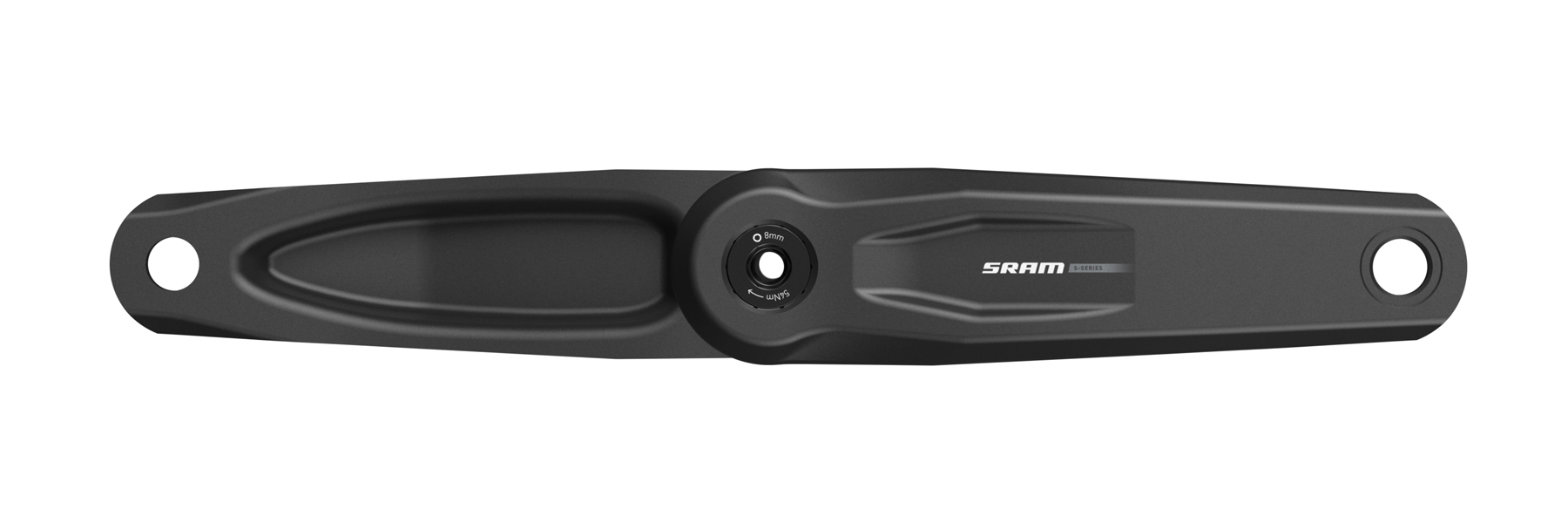
Controllers

The S-1000 Transmission uses the same options for a controller pod as the other Transmission versions, with the more basic “Pod Controller” getting an overall similar design as the higher-end “Pod Ultimate” one, just without the swappable buttons of the Ultimate. The new Pod Rocker option that SRAM rolled out a few weeks ago is compatible as well.
All three versions can be used with either a discrete “Infinity Clamp” mount that attaches to the handlebar directly, or with a “Bridge Clamp” that mounts to a Matchmaker-X-compatible brake lever. As with the higher-end Transmission derailleurs, the S-1000 T-Type derailleur is compatible with prior-generation Eagle AXS controllers if you’d prefer to use one of those.
DB8 Stealth Brakes
- MSRP: $137 / €148 / £132 per brake
- Stated Weight: n/a
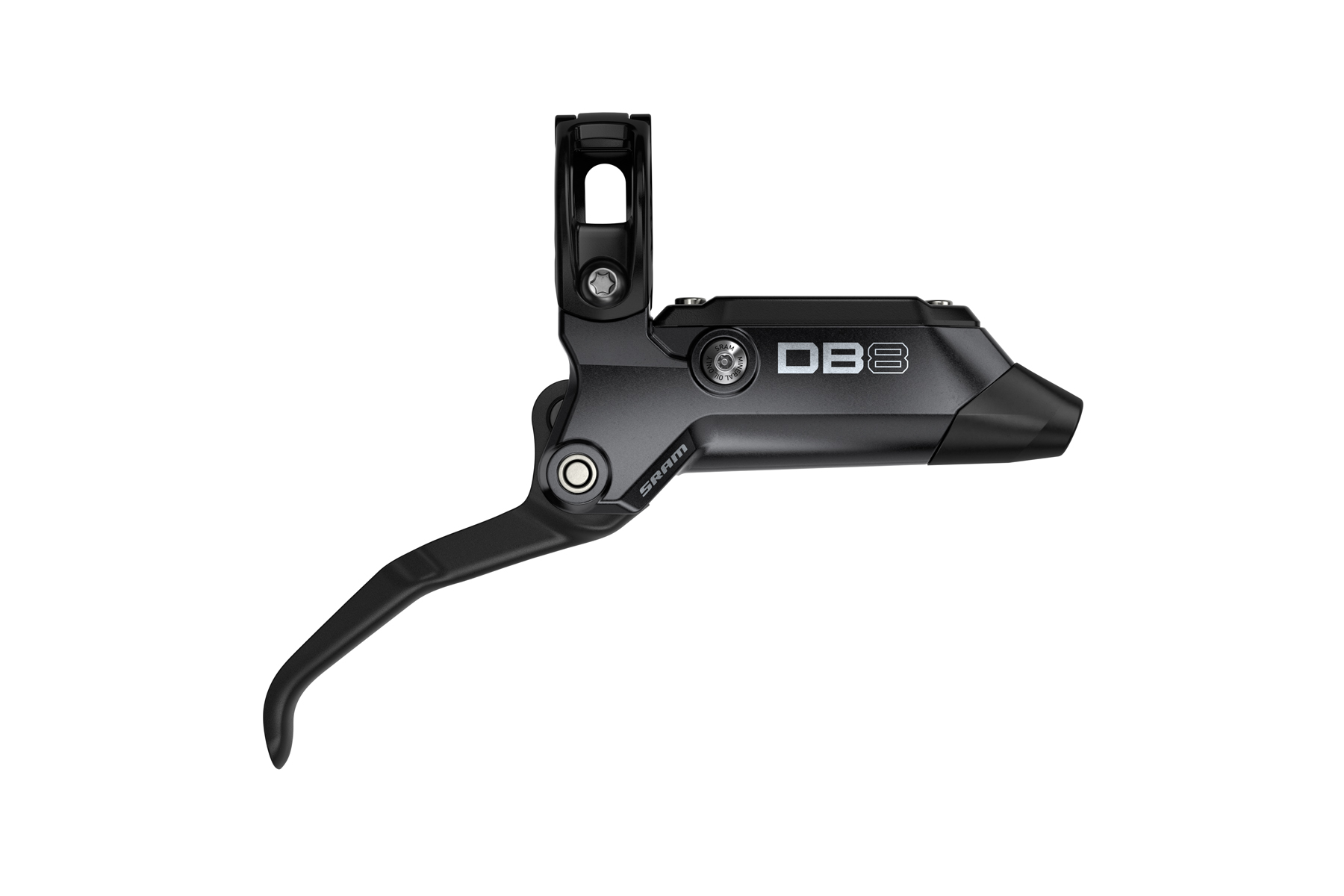
SRAM has also updated their DB8 brakes, but the changes appear to be mostly cosmetic, in the form of a new “Stealth” lever assembly. That’s SRAM’s term for the design language used on most of their current-generation brakes, where the lever body and hose connection point are moved in closer to the handlebar, with the hose running parallel to it. The new DB8 now matches the Level, Code, and Maven brakes in that regard.
But otherwise, the details of the DB8 haven’t changed much. It still uses mineral oil for the fluid, and shares its pad shape with the longstanding Code. The DB8 lever is asymmetric, so it can be run on either side of the handlebar, and it uses SRAM’s longstanding Matchmaker X clamps, with the option to integrate the other controls into a single clamp.
SRAM calls the DB8 their “simple, robust, and powerful brake for riders who prefer to set and forget.” Their power is claimed to be similar to Codes, and we’ve found that to be more or less accurate for the outgoing version, though the stock organic pads are a clear step down in power (especially in wet conditions and/or when very hot) as compared to the metallic pads that come stock in most Code variants. Again, the DB8 and Code calipers use the same pads, so it’s possible to put metallic pads in the DB8 to beef them up.
Some Questions / Things We’re Curious About
(1) Just how different are the S-1000 and GX Transmission groupsets in terms of their performance and construction? Apart from the cassette, the two look extremely similar on paper, but are there more subtle differences hiding beneath the surface?
(2) How much will a replacement S-1000 cassette cost, especially since the higher-end Transmission cassettes require a different freehub body?
(3) And will the S-1000 parts eventually become available aftermarket?

Are the DB8 brakes basically mineral-oil Codes?
Sort of. They don’t have the bearing lever pivot, contact point adjustment, or swing link cam of the higher end variants, but they’re pretty close to being a mineral oil Code R.
Makes sense, thank you!
It doesn’t exist without an actual weight.